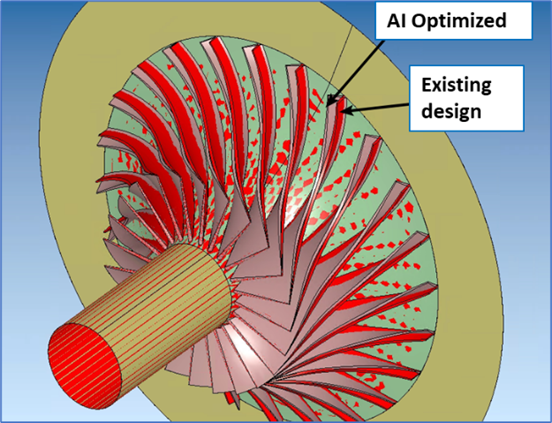Krain Impeller Design Improvement - Efficiency Gain of 0.8% Over an Existing Already Optimized Design
Engineers are constantly searching for better designs. Starting with an initial design, they will relentlessly tweak various design variables and rerun their simulations in an effort to improve the design until they run out of time. This often leaves them frustrated, since they feel they could have achieved that elusive “best” design if they had just had a little more time.
With this in mind, TurboTides (www.turbotides.com) implemented the OASIS AI Optimizer in their suite of Turbo design software for compressor, fan, pump and turbine to aid their customers to find the best alternatives with allowable time and computer resources.
Integrated seamlessly within the Turbotides Graphical User interface (GUI), user can access the powerful artificial intelligence (AI) and machine learning technologies with very little additional effort. The design engineers only need to 1) identify the design variables and related constraints, 2) specify the design objectives, and 3) click a single button to launch the optimization process . Decades of algorithmic research built into OASIS takes care of the manual, time-consuming trial-and-error design tweaks.
In a recent test case, TurboTides was used in a Krain Impeller design improvement project with the objective to see if OASIS AI can squeeze anymore efficiency out of an existing, already ‘optimized’ design under rated conditions. If this is possible, it can be highly valuable for manufacturers to revamp their existing product portfolio leveraging the AI capabilities.
The operating conditions were:
Inlet pressure: 101,325 Pa
Inlet temperature: 15 degree C
Flow rate: 4 kg/s
Design pressure ratio: 4.7
Medium: air
Speed: 23,363 RPM
The impeller diameter was fixed and the flow rate was set to 4 kg/s.
The design objetive was to improve the impeller efficiency at rated operating conditions with no loss in the design pressure ratio.
The design variables included:
Meridional flow path curves (hub and shroud profiles)
Blade shape (shroud beta angle distribution and hub beta angle distribution)
Within only hours, the OASIS optimizer was able to find a better design with an 0.8% efficiency improvement over the existing design, while at the same time it increased the pressure ratio from 4.7 to 4.89! This example is but one of many that illustrate the power of the OASIS AI Engine.



